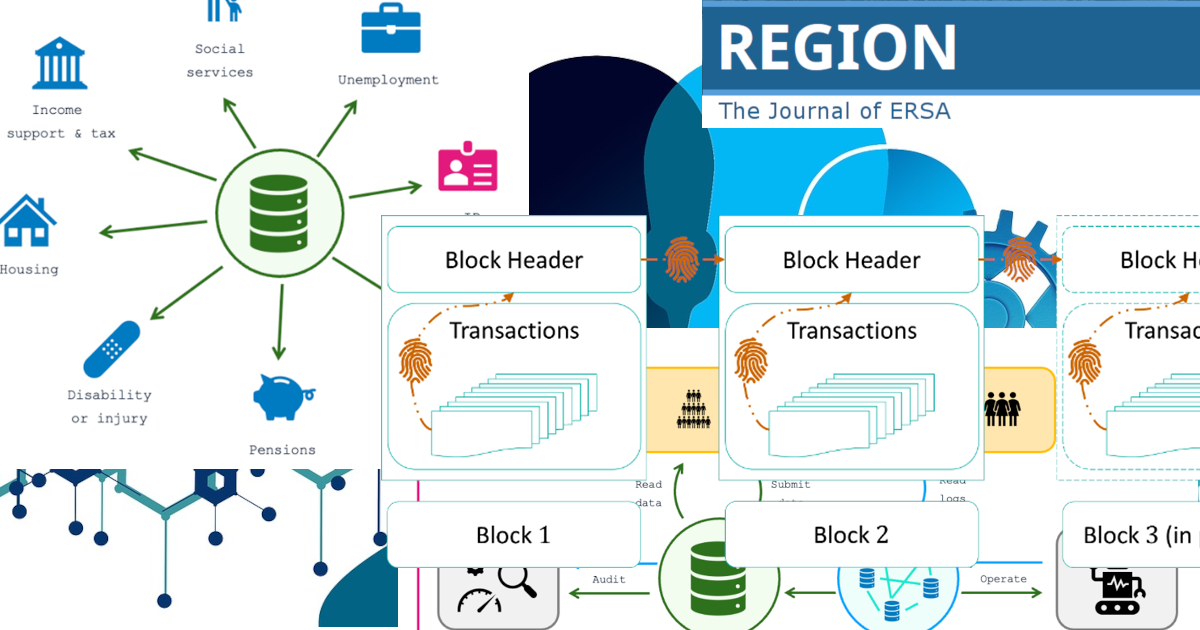A Blockchain-Based Welfare Distribution Model for Digital Inclusivity
DOI:
https://doi.org/10.18335/region.v10i1.434Abstract
An unprecedented rate of technological advancement, compounded by the COVID-19 pandemic, has expedited our transition to a fully digitalised society. Traditionally, digital inclusion focuses on an individual's ability to connect to and access information from the internet. The adoption of novel technologies such as artificial intelligence and blockchain is little distinguished in the literature from internet accessibility. While these digital solutions present novel opportunities, they may also perpetuate or exacerbate the existing hurdles faced by digitally excluded localities. However, these technologies could also be used to tackle the digital divide. Inspired by the design of Bitcoin, the current study offers a conceptual blockchain-based welfare model that adopts a two-pronged approach to enable the fair distribution of capital and resource allocation across the UK regions. The model offers transparency over institutional processes and improves their trustworthiness while preserving privacy. At the community level, the model assumes the application of economic incentives in order to promote digital inclusivity and stimulate cooperation and competition within local cultures. By mobilising both public institutions and communities, such a holistic model would assist the flow of information between the supply and demand side of the regional economy. This approach may not only help to dissolve the welfare losses arising from the digital divide, but also improve social well-being in all regions.

Downloads
Published
How to Cite
Issue
Section
License
Copyright (c) 2023 Chloe Tartan

This work is licensed under a Creative Commons Attribution 4.0 International License.
REGION is an open journal, and uses the standard Creative Commons license: Copyright We want authors to retain the maximum control over their work consistent with the first goal. For this reason, authors who publish in REGION will release their articles under the Creative Commons Attribution license. This license allows anyone to copy and distribute the article provided that appropriate attribution is given to REGION and the authors. For details of the rights authors grant users of their work, see the "human-readable summary" of the license, with a link to the full license. (Note that "you" refers to a user, not an author, in the summary.) Upon submission, the authors agree that the following three items are true: 1) The manuscript named above: a) represents valid work and neither it nor any other that I have written with substantially similar content has been published before in any form except as a preprint, b) is not concurrently submitted to another publication, and c) does not infringe anyone’s copyright. The Author(s) holds ERSA, WU, REGION, and the Editors of REGION harmless against all copyright claims. d) I have, or a coauthor has, had sufficient access to the data to verify the manuscript’s scientific integrity. 2) If asked, I will provide or fully cooperate in providing the data on which the manuscript is based so the editors or their assignees can examine it (where possible) 3) For papers with more than one author, I as the submitter have the permission of the coauthors to submit this work, and all authors agree that the corresponding author will be the main correspondent with the editorial office, and review the edited manuscript and proof. If there is only one author, I will be the corresponding author and agree to handle these responsibilities.




